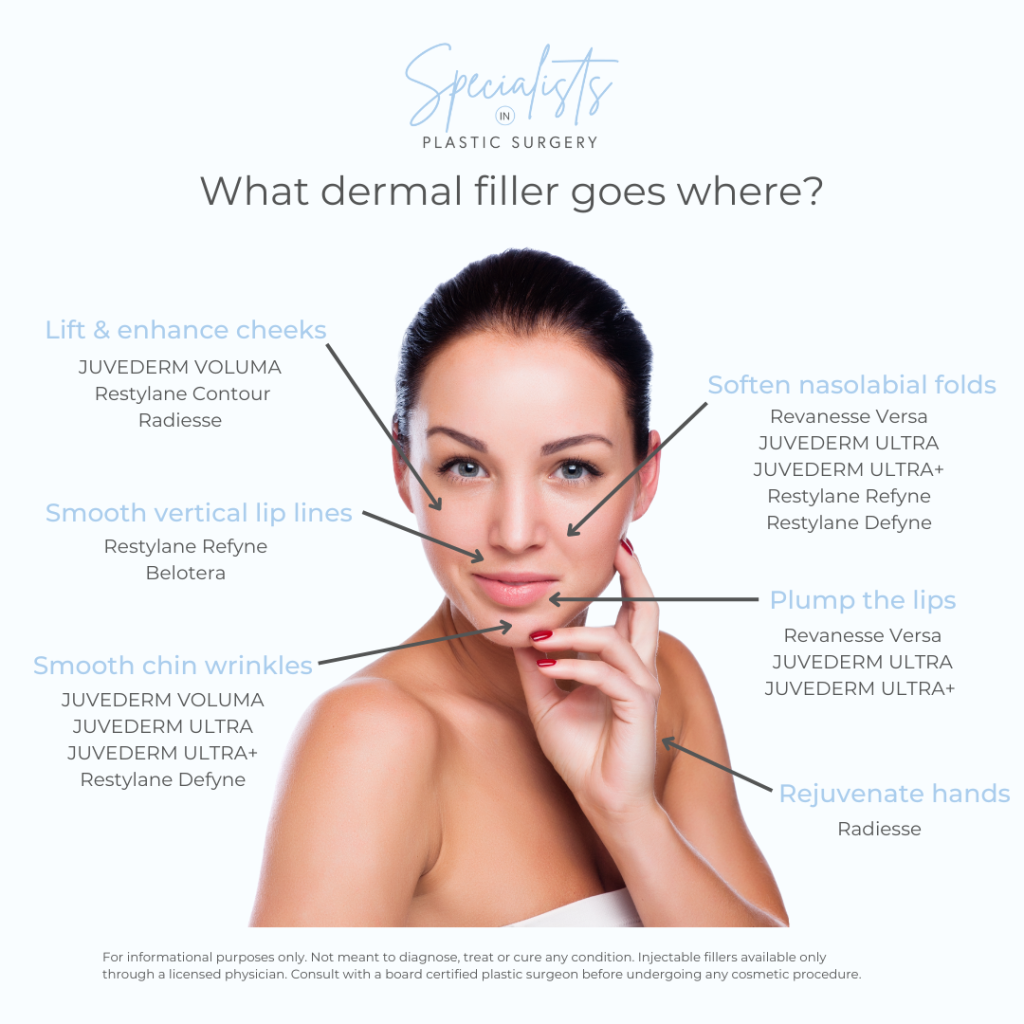Written by Amanda Olsen, PA-C Injector
2 Minute Read:
Patients often ask why different fillers are chosen for different parts of the face. While many patients are aware there are different brands of dermal fillers like JUVÉDERM®, Restylane®, and RADIESSE®, very few patients are aware of what makes these fillers different.

Hyaluronic Acid Fillers
Many dermal fillers are made up of hyaluronic acid, a compound found naturally in our cells. This substance binds with the water in our tissue, making our skin supple and more hydrated. Each of these brands of fillers have different sized molecules that affect the placement of the filler and ultimately how it will integrate with a patient’s tissue.
Dermal fillers with smaller molecules spread more thinly and are used in superficial areas like fine lines and lip lines to provide a delicate contour. For example, JUVÉDERM® ULTRA and ULTRA +, Restylane®, and Revanesse® Versa™ work great for the lips and nasolabial folds (laugh lines). Restylane® Refyne, Restylane® Silk, and JUVÉDERM® VOLLURE® are specially designed to address fine lines.
Dermal fillers with larger molecules are injected deeper into the tissue to lift and project areas like the cheeks, jawline, and chin where we need more support and structure. Fillers like JUVÉDERM® VOLUMA® and Restylane® Defyne are denser and provide more structure to these areas which is why they are commonly chosen to help increase a patient’s contour.
Calcium Hydroxylapatite Fillers
The RADIESSE® filler has an additional ingredient – calcium hydroxylapatite. These calcium spheres coated in a gel carrier, help restore elastin and type one collagen. This additional ingredient makes Radiesse a great option for smoothing smile lines, defining jawlines, even restoring age-related volume loss in your hands!
All dermal fillers typically last around 8 months to one year in areas of high movement (like lips and around the mouth) and 12 to 18 months in areas with little movement (like cheeks, chin, and jawline).
Now that you understand the similarities and differences of these fillers, how do you determine which one would work best for you? That decision should be based on your prior experiences with filler and the recommendation from a qualified injector. I work with each patient individually to create a customized treatment plan over a realistic time frame to help them achieve their aesthetic and skincare goals.
Interested in Learning More?
The best way to find out which treatments will work best for you is to come in for a complimentary consultation! Call Specialists in Plastic Surgery today at 919.785.0505 or fill out our online contact form.